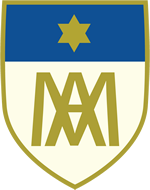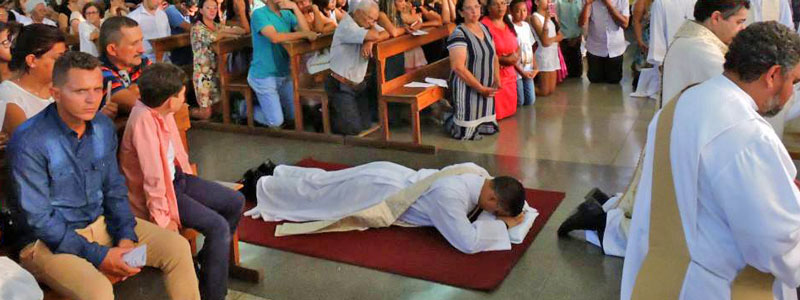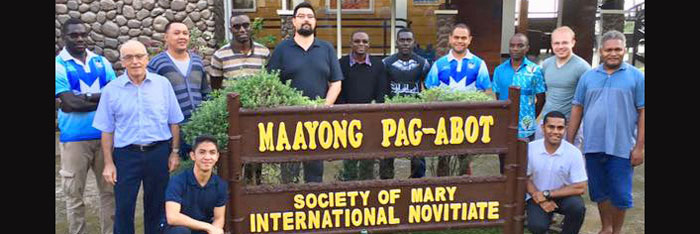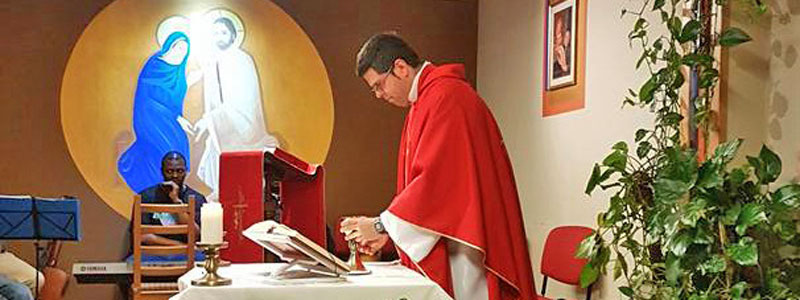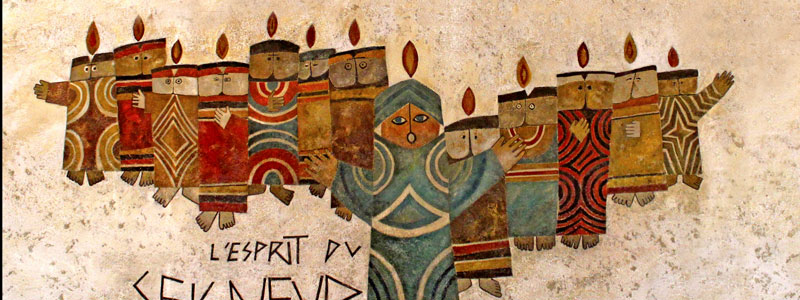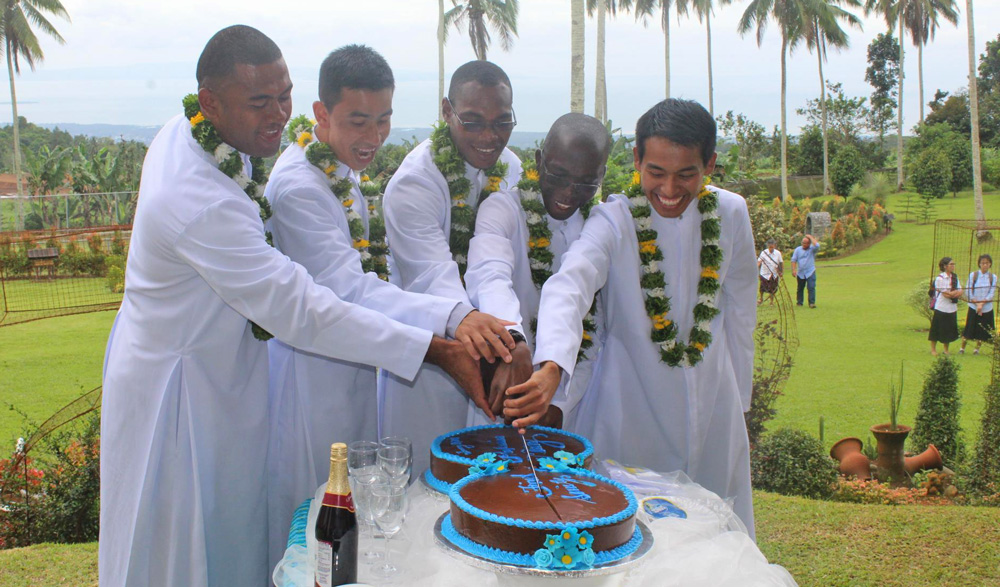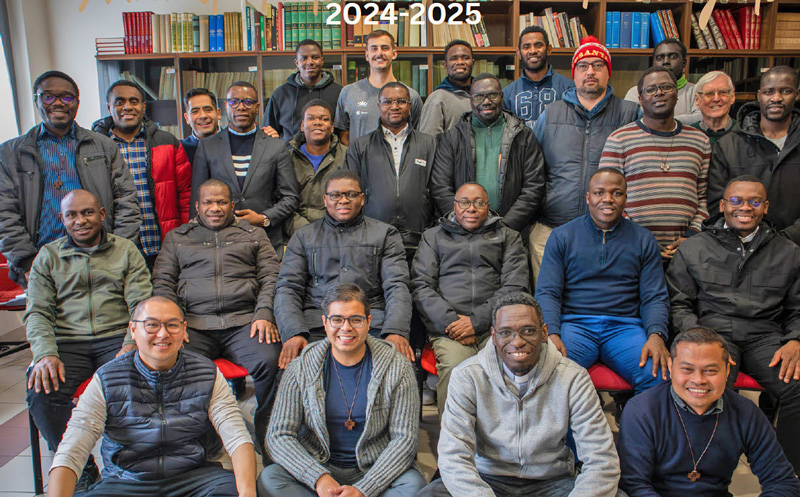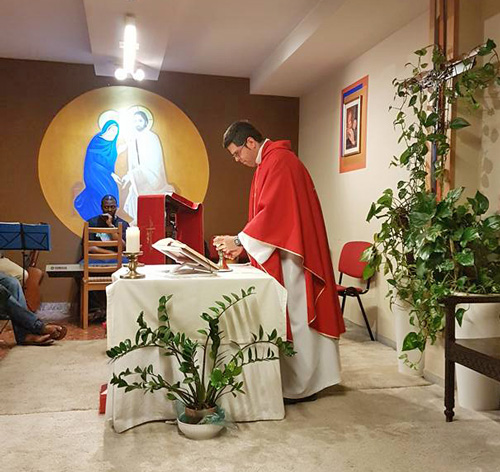The Marist Vocation |
| This page: Marist Fathers Vocations' video | Steps to a vocation with the Marist Fathers | The Marist Family | Mary in the midst of the Apostles |
Contact Fr Gerard Hall:
|
Marist Fathers Vocations' videoNow on Facebook. Click here |
 |
Steps to a vocation with the Marist FathersLearning about Marist life Accompaniment The accompaniment period is a supportive and positive experience. Meanwhile, the person while discerning his interest and willingness to become a Marist, has the opportunity to visit some of the Marist communities and to learn more about the Society of Mary. Application for initial formation To be a considered for acceptance into the Marist formation program a candidate must usually be under 35 years of age. The first period of the initial formation program takes one or two years; after that the candidate applies to enter novitiate. |
|
Novitiate Religious Profession |
|
New Marists on the day of their religious profession |
|
Seminary Studies After a minimum period of three years, the temporarily professed Marist makes final profession as a Marist. Ordination Candidates for the priesthood are called to ordination on the completion of their seminary studies and usually at the end of a year of pastoral experience in a pastoral or mission setting.. |
|
|
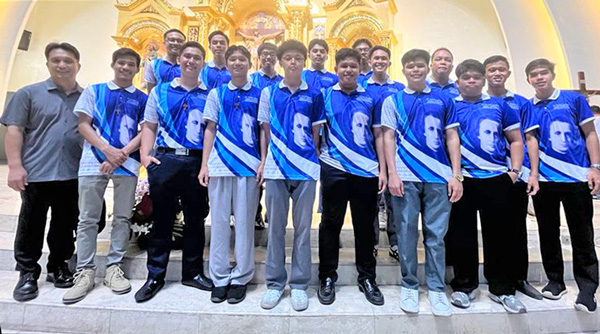 |
| Above: Community of Marist International Theologate, 'Casa di Maria', Rome. | First Mass of Fr Daniel at Casa di Maria | Students at St Peter Chanel Formation Community, Davao, Philippines. Below: The priestly ordination of Marists |
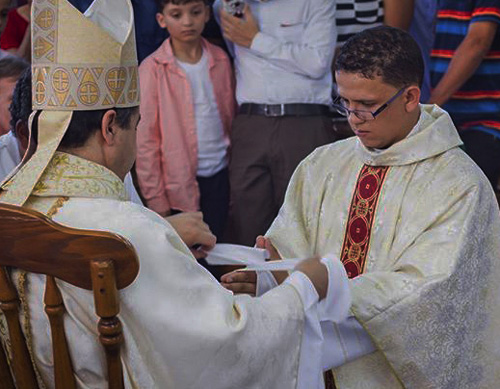 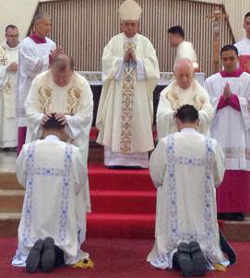 |
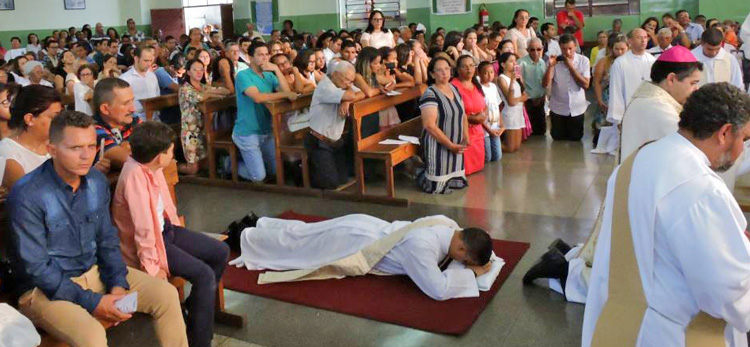 |
More on the Marist vocation:
- Marist Youth International http://www.maristyouthinternational.org/html/en/vocations.html
- SM General Site https://www.maristsm.org/en/vocation.aspx
- SM NZ https://www.sm.org.nz/marist-vocations/
- SM Oceania http://www.maristoceania.org/en/vocation
- SM Asia https://maristasia.org/vocation-3/
- SM Europe http://www.maristeurope.eu/en/vocation/
- SM North America http://www.societyofmaryusa.org/join/vocations/vocations.html
- François Marc’s Marian Church https://www.acertainway.info/life-from-within/life-force/a-marian-church/
The Marist Family
The pioneer vision of the Marist aspirants was to have one Society of Mary with multiple branches. This is how the Marist Family developed...
Within six months of the Fourvière Pledge, one of their number, St Marcellin Champagnat, gathered young men in his parish of La Valla, France, to be foundation members of the Marist Brothers’ community. The Brothers, who became known as the “Little Brothers of Mary” commemorate this date, 2nd January 1817, as the beginning of their congregation. As the largest of the Marist groups, their work in education and missionary outreach in over ninety countries follows Marcellin’s vision of being “ready to work in every diocese in the world”.
Another signatory of the Fourvière Pledge, Jean-Claude Colin, played a pivotal role in developing the broader Marist project. His appointment to Cerdon, where his brother Pierre was parish priest, proved providential. They soon invited two young women, Jeanne-Marie Chavoin and Marie Jotillon, to be part of the Marist project. They arrived at Cerdon on 18th November 1817, which the Marist Sisters now commemorate as their Foundation Day. Many lay-people also attached themselves to the newly emerging Marist project, specifically identifying themselves as “Marists”. These were beginning steps towards Jean-Claude Colin’s vision of “the whole world Marist”!
Over the next twenty years, the group of what was to become the priests’ branch of the Marist project worked mainly as missionaries to rural parishes (Bugey Mountains, 1824) and in secondary education (Belley Minor Seminary, 1829). Ongoing attempts to seek authorisation for a single Society of Mary – including priests, sisters, brothers and laity – proved fruitless. Rome would not agree with such a “monstrous plan”, but finally authorised Marist Fathers to found the Church in the South-West Pacific. Consequently, on 24th September 1936, 20 Marists – until then still technically diocesan priests -- took their first vows. The group included Jean-Claude Colin, elected as Superior General, as well as the two who were to become the Society’s first saints, Marcellin Champagnat and Peter Chanel.
Within six years of the Profession of these first 20 Marists in 1836, the whole Marist enterprise already numbered 60 priests, 400 brothers, 100 sisters, and many lay people, spread throughout a dozen dioceses. By then, over 40 had set out for the missions of Oceania, including its first martyr, Peter Chanel. In such a short time, and from such a small part of France, nearly 600 people had joined an enterprise, convinced that living the Gospel in the way of Mary was God’s calling for them to be truly missionary. They called this “Mary’s work”.
By 1850, 74 priests, 26 of Marcellin’s “Little Brothers of Mary”, 17 lay-brothers and many identified as lay-Marists set out for the Pacific. In 1845, Francoise Perroton was the first of many women who travelled to the Pacific as Marist lay-missionaries. These women are called “Marist Pioneers” becoming in time Marist Missionary Sisters, ministering today in 24 countries.
Together, the various Marist branches of the one Marist tree, including the various groups of Marist laity, live and work together where possible inspired by the vision of enabling a new Church to be born in the image of Mary ‘midst the Apostles at Pentecost.
In Australia, Lay Marists are represented by “Marist Laity Australia” and the newly formed “Marist Association of St Marcellin Champagnat”. Together, Marists of all branches seek to live the Gospel in the way of Mary, to be what Pope Francis calls all Christians to be, namely, “missionary disciples of divine mercy”, and to work for justice, peace and reconciliation in the spirit of Mary’s Magnificat.
More on Marist Lay Branches in Australia:
- Marist Laity Australia http://www.maristlaityaustralia.com/2017/
- Marist Association of St Marcellin Champagnat http://www.maristassociation.org.au/
- The Marist Family https://www.youtube.com/watch?v=-JiHHn5I34U
More on the Four Marist religious branches:
- Marist Fathers (priests & brothers of the Society of Mary) [SM] http://www.maristfathers.org.au/
- Marist Sisters [SM] http://www.maristsisters.org/
- Marist Brothers [FMS] http://www.maristbrothers.org.au/
- Marist Missionary Sisters [SMSM] http://www.smsmsisters.org/
Mary in the midst of the ApostlesThe Marist vision is inspired by the image of Mary in the midst of the Apostles in the new-born Church of Pentecost. By the time of the French revolution, the Church had become wealthy and powerful; the visible face of the Church had become aloof to the ordinary lives of people. This was a Church inspired more by a narrow view of the Petrine symbol, emphasizing power and authority. For this reason, the early Marists looked to Mary as a counter-symbol which privileges love and service over the trappings of power. In this Marian Church, obedience to rules and regulations is less important than the communication of God’s gracious forgiveness and tender-loving mercy. They worked, prayed and longed for the emergence of such a Church. Marists today continue this work of evangelisation by striving to live the Gospel in the way of Mary – and even to “think as Mary, feel as Mary, judge and act as Mary in all things”. And they would be present in the Church as a Marist Family. |
|
Mural of Mary at Pentecost in the chapel of La Neylière, France, near the resting place of Marist Founder, Jean-Claude Colin |
